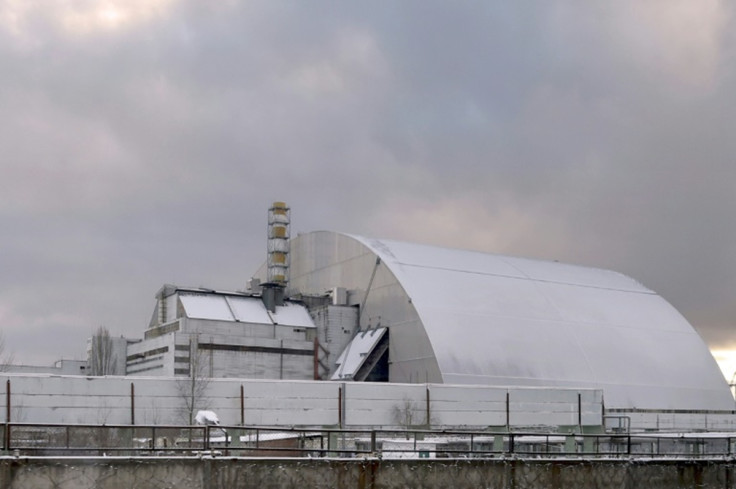Chernobyl Nuclear Power Plant Struck by Drone Campaign — Kyiv Labels It a 'Global Threat'
Drone attack on 1 October cut power to Chernobyl for more than three hours

Ukraine has raised the alarm after drone strikes disrupted power at the decommissioned Chernobyl Nuclear Power Plant, prompting warnings of a wider nuclear safety crisis. President Volodymyr Zelenskyy and international watchdogs say the incidents highlight the vulnerability of nuclear sites in wartime and pose risks that extend beyond Ukraine's borders.
Officials confirmed that Chernobyl lost external power for several hours following the latest attack. While radiation levels have remained stable, Kyiv insists that any disruption to cooling or monitoring systems amounts to what Zelenskyy has called a 'global threat'.
The International Atomic Energy Agency (IAEA) has urged swift restoration of reliable electricity supply, stressing that nuclear safety cannot depend indefinitely on backups or damaged infrastructure.
Drone Strike and Power Loss
On 1 October 2025, more than 20 Russian-Iranian Shahed drones hit facilities in Slavutych, the town that provides Chernobyl with electricity. The assault cut off power to the site for over three hours until supply was restored, according to Reuters.
This followed an earlier strike on 14 February, when a drone carrying a high-explosive warhead hit the New Safe Confinement (NSC), the steel-and-concrete dome built over reactor 4 after the 1986 disaster, according to BBC. That attack damaged the outer cladding and ignited a small fire, though the inner containment shell was not breached. Firefighters extinguished the flames and radiation levels remained normal, according to Ukrainian authorities.
Kyiv's Warnings
President Zelenskyy has accused Russia of 'deliberately creating the threat of radiation incidents' by targeting energy and nuclear-linked infrastructure. He has appealed for stronger international measures to shield nuclear facilities from attack, according to The Washington Post.
Officials argue repeated strikes leave Chernobyl dangerously exposed. Although the site no longer produces electricity, it stores significant quantities of spent fuel that require continuous cooling and monitoring. Any prolonged loss of power, Kyiv warns, could undermine those systems.
The IAEA has echoed these concerns, noting that while temporary outages have not yet led to radiation leaks, reliance on generators or short-term fixes is fragile. The agency continues to monitor conditions closely with Ukrainian authorities.
Safety Status and Responses
Officials have stressed that radiation readings at Chernobyl remain at normal levels following both incidents. No breach of the inner reactor 4 containment has been reported, according to ABC News.
The February fire was controlled, and engineers later carried out inspections to confirm the structural integrity of the protective dome. The October outage was resolved within hours but reinforced Kyiv's calls for stronger defences around nuclear infrastructure.
International and Regional Impact
Chernobyl lies about 90 kilometres (roughly 60 miles) north of Kyiv, placing it close to the Belarusian border. Experts warn that any radiation release would not remain confined to Ukraine, underlining the global dimension of the threat.
Reports from Ukraine and international monitoring agencies warn that damage to nuclear safety systems at Chernobyl or elsewhere could have consequences beyond Ukraine's borders. Shelling near the Zaporizhzhia nuclear plant has already drawn condemnation from the IAEA and calls from EU and NATO leaders for stronger protection of nuclear facilities.
It is now the seventh day – something that has never happened before – of an emergency situation at the Zaporizhzhia Nuclear Power Plant. Because of Russian shelling, the plant has been cut off from power, disconnected from the electrical grid, and is being supplied with… pic.twitter.com/hUSusfgVjy
— Volodymyr Zelenskyy / Володимир Зеленський (@ZelenskyyUa) September 30, 2025
Both sides must let IAEA secure the 750 kV corridor: ceasefire for repairs, joint technical teams, restore at least 2 off-site feeds, keep units in cold shutdown, stock diesel & test backups. Nuclear safety > politics. #ZNPP #IAEA
— Rolf Wilms 🏴 (@WilmsRolf) October 1, 2025
For those who might live in areas that would be affected any leakage from the plant, make sure you have your potassium iodide handy.
— Billocrates (@billywilky) October 1, 2025
Still blows my mind at this point that Zaporizhzhia is still in play.
— Sam Adams (@Bensam123TV) October 1, 2025
NATO should literally take it over and make it a off limits area to both sides till land is determined, so neither side uses it as a stronghold with the threat of nuclear contamination.
Goes for all plants.
Global Threat or Local Incident?
The strikes on Chernobyl underscore how nuclear sites remain vulnerable in conflict zones. Ukraine has urged the international community to treat such actions as security threats that extend well beyond its borders.
Although no radiation leaks have been detected, the outages and structural damage underline the fragile nature of nuclear safety in wartime conditions. Officials argue that even limited disruptions demonstrate how quickly risks could escalate, making the protection of facilities such as Chernobyl a matter of international concern.
© Copyright IBTimes 2025. All rights reserved.




















